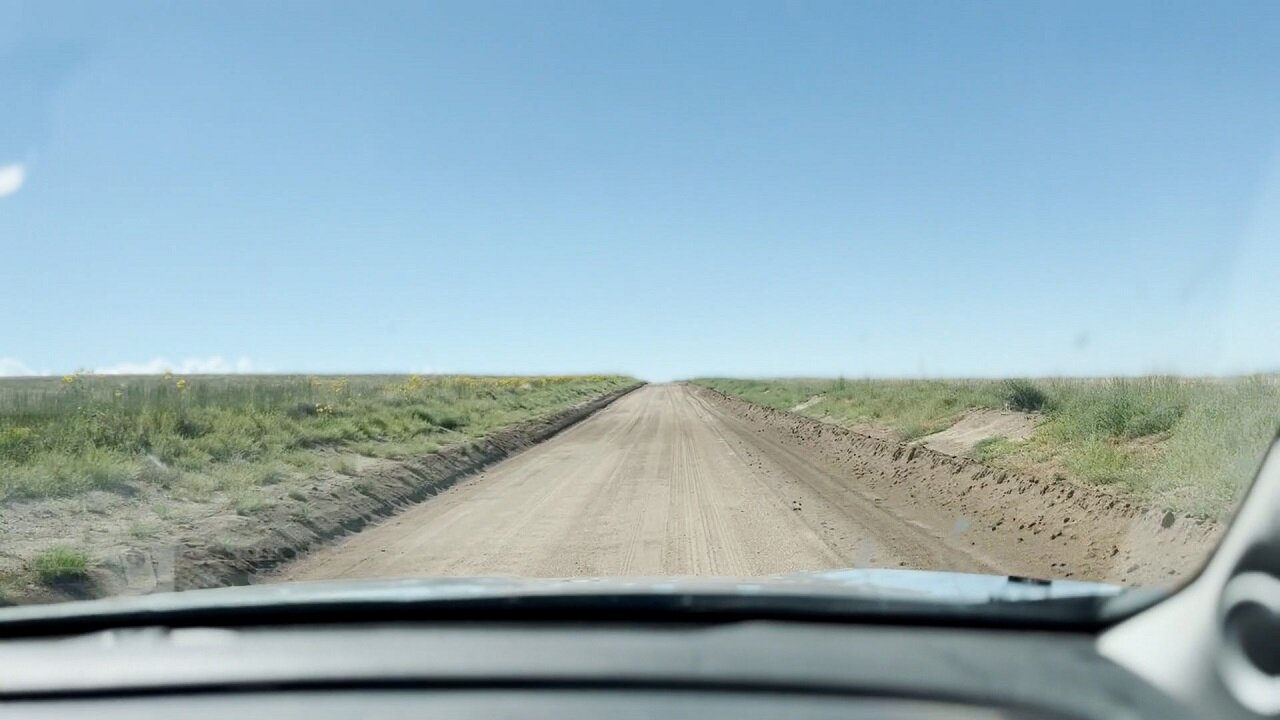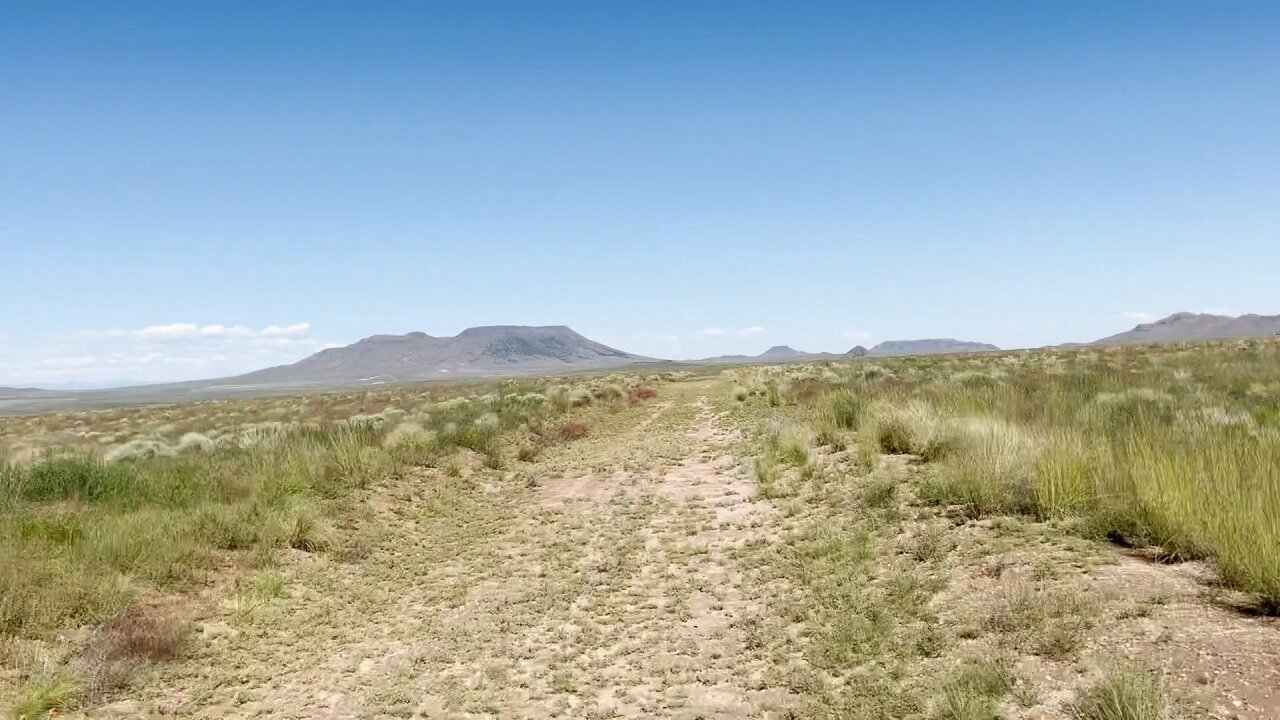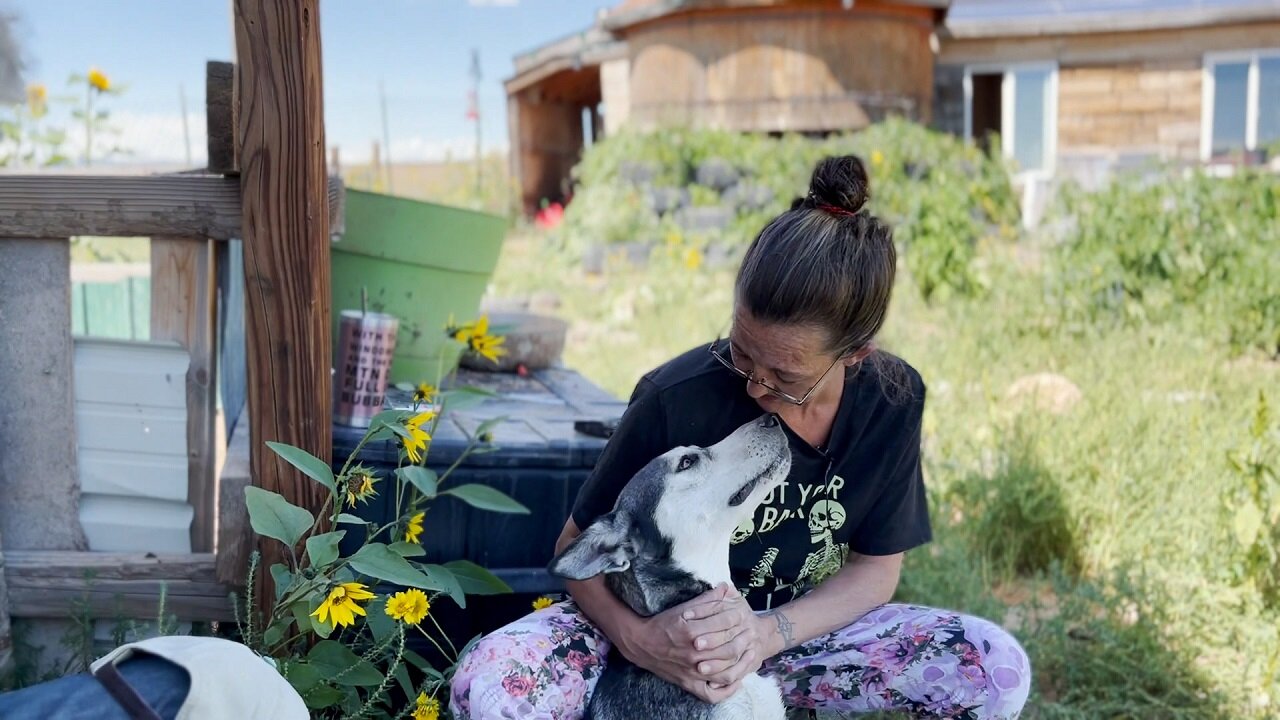Cheap Land | The land of broken dreams

COSTILLA COUNTY, Colo. — More than a decade ago, Stacy Gruber traveled the back gravel roads from New Mexico through southern Colorado with her husband, Frank. “I’d really love to own land here someday,” she told him.
Something about the mountains, the sky, and the earth spoke to her. “I felt at peace. It felt right. I don't know how to explain it,” Stacy said. “I knew this area was supposed to be home.”
Today, she and Frank live off-grid with their five daughters on a five-acre plot east of the Rio Grande. “As it just so happened, we did end up owning land here,” Stacy said. While the initial feeling she had about the area persisted, there was yet another factor in their decision: “The reason that I bought the land that I did, I’m not going to lie — the land is cheap here,” she said. Known for its inexpensive, scam-ridden rural subdivision plots, the outskirts of Costilla County have been hocked by lightweight real estate agencies for decades.
[Related: Watch Colorado Voices: Cheap Land Part I and Colorado Voices: Cheap Land Part II]
The family’s dreams of self-sufficiency hinged on owning their own property. Nine years ago, the Grubers purchased a barren tract of sage brush and chamiso to start a new life. Along with their two eldest kids — and while Gruber was seven months pregnant — the family first lived in a tent, then moved into a trailer while constructing their first off-grid home.
“I always wanted my own land — my own thing,” Frank Gruber said. Growing up in the city of Littleton, his family often explored the outdoors. “I spent a lot of time in the mountains, camping, hunting, and fishing,” he said. He was inspired to own land by his grandparents, who had a farm. “I wanted the freedom to grow my own food and have my own animals,” he said. “It’s just something that I always wanted — and my wife wanted the same things.”
“It’s always been my dream to own property, and that's why we're out here,” Stacy agreed. “I wouldn't go back.”



Stacy and Frank Gruber at their home with three of their girls in rural Costilla County.
The Grubers now live in an upgraded wood home a half dozen miles from their first residence. "We have a well now – and a better view,” Stacy said. They purchased the place from its previous resident, who had to leave the remote prairie due to health issues. It’s hard to live out here — and even harder for people with health needs. Doctors, dentists, and specialists are hard to come by. Here, many folks travel hours one way for a single appointment. Within the last few years, Frank had two bouts of cancer, and Stacy had major back surgery. The unexpected bills and logistics of receiving care are both burdens.
[Read previous articles in the Cheap Land Series from Rocky Mountain PBS: Part One, Part Two, Part Three, Part Four, and Part Five.]

One of many foregone attempts to live on Costilla County's isolated prairie.
Stacy acknowledged that moving to the isolated prairie was an adjustment. Staying warm — and sane —during those first frigid months was no easy feat. “It got rough the first winter, when we had five people in an RV,” she said. She likened their early days on the prairie to “an extended camping trip. My kids love to go camping and hiking. They like to be outdoors. They always have. When we first moved out here, it was a lot like camping.”
The Grubers began homeschooling their children before moving to the prairie and continue to this day. Stacy and Frank incorporate teaching daily life skills in tandem with a state-sanctioned homeschool education. “We do our regular homeschool that you're required to, but then we also have extra time to do other things,” Stacy said. From horse care to photography, the Grubers are eager to support their daughters’ hobbies. “Most of the girls, once they get to a certain age, if they're really passionate about something, I'll help them start learning about it.”
Today, their oldest is 18, and works at a nearby ranch. “All my girls know how to help build. All the girls know how to help work on machinery and vehicles,” Stacy said. “They all know how to cook. They all know how to chop firewood. And we're not preppers, or anything like that — but I know that if anything bad were to happen, my kids would be able to survive without all the necessities that people need in town.”
Though they live off the electricity grid, Gruber says the family has many of the same amenities as townspeople. “I have a TV, I have a refrigerator, I have a stove, I have a fireplace, I have hot water. We have power. We just get it a little different. We have solar. And if our solar power won't push it, then we run a generator.”
During the cold months, “everything here freezes,” Stacy said, and she often does laundry at a laundromat.

A view of Ute Mountain from the Gruber’s first residence.
“Not everybody can make it out here,” Stacy said of the harsh winters, cold, wind, and isolation. “I see so many people every year come in and throw up little shacks. Then it gets cold, and they start rolling back out. Or the county comes out here and runs them out.” Those who can’t survive the cold, or for whom the lack of infrastructure and permitting processes prove too cumbersome, often simply abandon their lots along with any building progress they may have made. Soon, their homes are torn apart, and the materials are repurposed on other properties, Stacy said. Things quiet down for a while, “and then the cycle starts all over again,” she said.
The prairie has a reputation for attracting those attempting to evade the law, but Stacy says she and her family are “very fortunate. We’ve got some really cool neighbors that live around us, and we have a little community.” Each year, she gathers the neighborhood kids — around 20 — and hands out second-hand Christmas presents she has collected and repaired, just in case their families can’t afford it.
“Some people out here are on disability, and they don't get much,” Stacy said. “They can barely make their land payment. Other people work their butts off, and still don't have much,” she said.

Many have tried to make a go in this barren, desert landscape.
“Living out here makes you a little more open to some things. Instead of being judgmental of people, you kind of learn to accept them for who they are and not their appearance,” Stacy said. “I don't try to dress to impress anymore. I live here, grow veggies, teach my kids, and play with our animals. Everybody that I want to impress is pretty much here in my household.”
Gruber said locals — and even friends and family — judge her for living off grid and home schooling, telling Gruber her kids aren’t getting the education and socialization they need. “My kids are getting what they need,” she said. “They get their hands in the dirt. And they don’t have the influence of a lot of the stuff that happens in town with kids their age.”
Stereotypes about prairie dwellers and her community can be exhausting to defend, Stacy said. The Grubers now have a permitted well, but other prairie dwellers get water from non-permitted sources — another friction between the community and locals who take water rights in the desert seriously.
“There are a lot of people in town that are judgmental about people who live out here,” she explained. “They want to stereotype us. And there are certain people who did get in trouble for certain things out here,” she said, owning that the remote locale attracts people who don’t want attention — or accountability — for their life choices. From puppy mills to sexual abuse to serial murders, there is little positive press that emerges. “But just because somebody did that, doesn’t mean everybody did,” Stacy said.
She acknowledged that the safety net for survival here can often fall back to county, social services, and other direct services organizations. “There are a lot of people who come out here and just literally throw up a plywood shack, park an RV, and call it good,” she said. When the weather sets in and it's cold, “and you have to get up every couple hours and stoke your stove, and people don't stop by, and you can't go outside and work in your garden, then cabin fever sets in,” Stacy said, “A lot of people call it quits.”

A seemingly endless, unmarked road on the prairie.
The area notoriously hosts some of the nation’s lowest seasonal temperatures. “Some people don't do a lot of homework before they get out here,” Frank added. “We're at 8,000 feet elevation. We're not ‘in the mountains,’ but we are in the mountains. People come here from Denver, or other places in Colorado, and figure that's what Colorado weather is everywhere,” Frank said. “It isn’t. And they're the ones that are moving out in October and November. They're packing their stuff and moving.”
By now, Stacy says, “we can often tell who is going to stay and who is not going to stay. I’m not saying it’s one hundred percent, but we can usually tell.”
Off the bat, “People learn that it's really easy to get lost out here, and it's hard to find your property,” Frank said. “They know the road their property is on, but there's no way to find it."

An overgrown county road leading to the Gruber’s.
Though neighbors give advice and lend a hand, when possible, there’s a hands-off mentality on the prairie. “You don't want to help someone that's not going to be here forever,” Frank said. "Why invest all your time into helping them for the summer, and then they just turn around and take off?”
Still, the Grubers have given and received food, gas, firewood and supplies during hard times.
“We don’t want our neighbors to freeze to death,” Stacy said. “There have been people that have frozen to death out here in their houses.” The Grubers recount a long list of fatalities from collapsed buildings, exploding propane tanks, fires and smoke inhalation, and freezing temperatures.
“Things here don’t always work out,” Stacy said.
Despite having seven family members to feed, Stacy is known to take in friends and family who are going through hard times. “Yes, I’m the home of the strays,” she laughed. “We always figure it out, somehow or another,” she said. “We will always figure it out.”
One of the “strays” she took in for a stint was Ted Conover, an author working on a book about off-grid prairie dwellers like the Grubers. As part of his research for “Cheap Land Colorado,” Conover purchased a 25-foot camper trailer and parked it on the Gruber’s property. He stayed there when conducting interviews and became a regular in the community — and, falling in love with the area, eventually purchased his own five-acre plot.
“We kind of gave him hope, and hints, and tips for living out on the prairie,” Stacy said of Conover’s early days here. “But he was really trying to experience this lifestyle, so we didn't step in unless we really thought, 'Maybe Ted could use some help.’”

Conover visits the Grubers at home.
“The first thing he had to learn was how to stay warm at night,” Stacy said. “There’s a learning curve on the prairie.”
Conover got to know the Gruber’s potbelly pig, their foul-mouthed exotic bird, and the view of Ute mountain through the seasons. “I think he has changed a little bit,” Stacy said. “I think Ted is a little more open now. Living out here does that to you.”
But it’s not for everyone. “I've seen some good people come out here, and then go stir crazy,” Stacy said. “They end up moving into town and getting hooked on drugs. And now they are totally different people, and they'll never be the same people. They ruin their lives,” she said. “They might have been healthy when they started out here, but they couldn't handle the cold or being alone. And the next thing you know, they're fighting, they're selling each other's possessions for drugs. One goes to jail, one disappears, one comes by like nothing happened. It's just nothing but drama.”
“That's why it's known as the land of the broken dreams,” Stacy said. “This place will either take you in or spit you right out.”

Stacy Gruber with her dog, Stormie.
Kate Perdoni is a Senior Regional Producer with Rocky Mountain PBS and can be reached at kateperdoni@rmpbs.org.